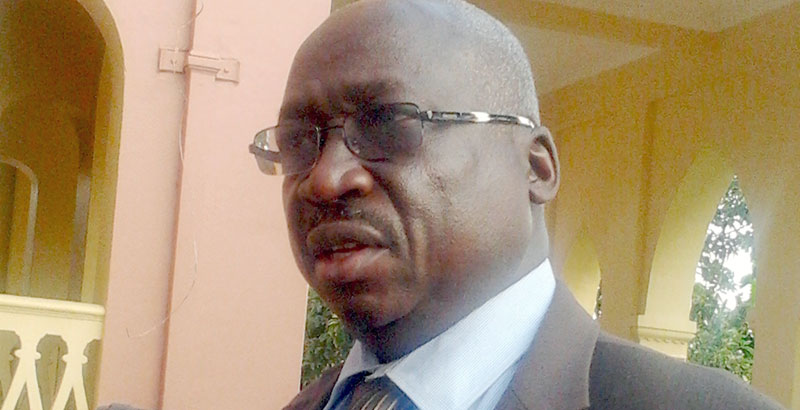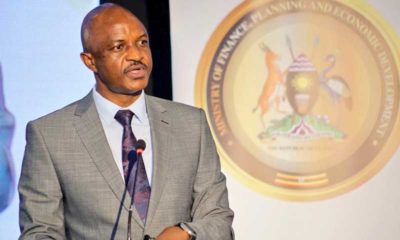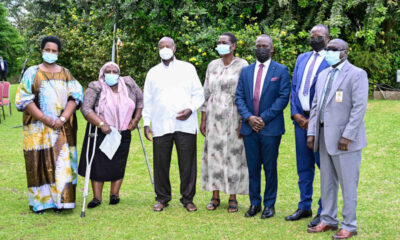Guest Writer
New science ministry at centre of poverty fight
The new ministry of science and technology finds itself in a unique position of having to coordinate nearly all scientific efforts aimed at fighting poverty in Uganda, the MP for Hoima Municipality
In a paper he presented at a monthly bio-cafe held recently on the question; What should the ministry of science, technology and innovations do, how, where and when, Dr. Bategeka argues that the new ministry faces a monumental challenge of increasing agricultural productivity especially since the vast majority of Ugandans are engaged in farming. Below is an abridged version of his presentation
Uganda has established the MoSTI against a background of low productivity in all sectors of the economy namely agriculture, industry and services. Therefore the MoSTI faces a formidable challenge of addressing decreasing factor productivity in all sectors with the view to production through factor productivity. Also through innovation, the MoSTI is expected to support innovation for the production of strategic commodities that the private sector may otherwise not produce due to R&D limitations.
However, since some technological innovations sometimes lead to undesirable effects, the MoSTI will need to regulate use of some technologies to protect Ugandans.
Research and Development (R&D) is not new in Uganda especially in agriculture. However, the country is not doing enough to tap the benefits of R&D because of weak institutional mechanisms that are missing in terms of translating generated knowledge into increased productivity. Indeed there are many technologies that have been developed by scientific research institutions such as NARO, but the technologies have remained on the shelves due to lack of appropriate innovations institutions. In other cases especially industry, research remains scanty and where knowledge generated through research, implementation faces the same predicament.
Uganda needs significant increases in productivity especially in agriculture, which is the most viable path in addressing poverty and reducing the incidence of hunger and malnutrition. For most years during the past three decades, growth of agriculture in Uganda has lagged behind that of population.
The sector has grown at an average of 1.5 percent per year compared to population growth rate of about 3 percent. With about 70 percent of the population eking a living from agriculture, it is not a surprise that poverty remains the number one development challenge in Uganda. The disparity between low agricultural growth and high population growth suggests that the problem of hunger and malnutrition has been worsening in the country. Existence of technologies developed by NARO could have helped to address the challenges if institutional mechanisms that are supportive of innovation existed.
The ministry of agriculture animal industry and fisheries was meant to streamline innovation in agriculture, but as we can see today, the result have been disappointing. With a well spelt out mandate of MoSTI, there is likelihood that focus on innovation and development of the requisite institutional mechanisms should be quickened.
In industry especially manufacturing, the situation is even worse. The share of industry in GDP has remained low, estimated at 15 percent. Moreover, productivity in manufacturing has also remained very weak, partly as a result of low levels of innovation in the sector that led to a narrow range of manufactured products. Deliberate actions are needed to increase the range of manufactured goods and innovation has a critical role to play in this regard.
I therefore envisage a MoSTI that has a fully fledged Directorate of Production and Productivity across the three major sectors of the economy namely; agriculture, industry and services. These could be departments that focus on strategic interests for the country such as coffee, which has high potential in poverty reduction as well as addressing the country’s widening trade deficit.
Those specific departments would work closely with knowledge generating institutions such as universities and other specialised to translate generated knowledge into products. In this regard, I envisage MoSTI to be able to fund credible research institutions to enable them to do research that will support innovation.
It should be noted that implementation of innovative projects should lead to increased employment. Therefore the mission of MoSTI is not only limited to focusing on economic growth but also on addressing employment. The country is in the process of developing industrial parts in several parts of the country, the MoSTI should position itself to service firms that get established in the industrial parks.
MoSTI and regulation
Some technologies could be harmful to people, their benefits notwithstanding. Use of some technologies need to be thoroughly researched before rolling them out. Issues for regulation in agriculture are likely to vary from those in manufacturing and from those in services. Accordingly my take is that the structure of the Directorate of Regulation should have departments that focus on each of the three major sectors of the economy; I.e Agriculture, industry and services.
Quick lessons from South East Asia
The newly industrialised countries of South East Asia developed mainly because they got the matter of science, technology and innovation right. The countries focused on use of technologies to increase productivity, starting with agriculture. Yields of rice in particular increased significantly. In Malaysia deliberate actions were taken to promote growing of palm and rubber trees. Starting with land reform, the government of president Mahatma Muhammad allocated each household 10 acres of land. One acre was reserved for intensive food production, while the rest of the land was dedicated to palm and rubber tree cultivation. Increased rubber production set the foundation for Malaysia’s participation in the car manufacturing sector.
In Vietnam, use of technology and innovation led to tremendous increases in yields across crops, particularly coffee. The state provided leadership for use of technologies and innovation. While in the 60s Vietnam produced the about 3 million bags of coffee, less than Uganda, today thanks to technology and political leadership, Vietnam’s coffee output has increased to 30million bags while Uganda still produces 3.5m bags of coffee.
In other words, Uganda is facing serious challenges with productivity increases across all sectors of the economy. The country faces even more still challenges when it comes to production of sophisticated manufactured goods. An economic structure that supports the production of primary agricultural commodities is unlikely to transform from a poor to middle income status in the shortest time envisaged.
Conclusion
Use of technology is the way to go if Uganda is to achieve middle income status in the near future. The creation of the MoSTI is timely. The ministry should focus on two broad areas; increasing production and productivity on the one hand and regulation on the use of new technologies on the other.
The first objective on increasing productivity and production is very important in terms of addressing Uganda’s development challenges especially poverty, unemployment and an ever worsening trade deficit. On the question of what the ministry should do, we feel that focus should be placed on enhancement of existing products and services. On the question of where, we feel it should be across the country starting with agriculture that supports majority of the population. And on when, we suggest that is it immediate, driven by Uganda’s desire to middle income status in the near future.
Dr. Bategeka is the MP Hoima Municipality and the former Director of the Economic Policy Research Centre at Makerere University. He is also an entrepreneur in the education and agricultural sectors
Comments




















